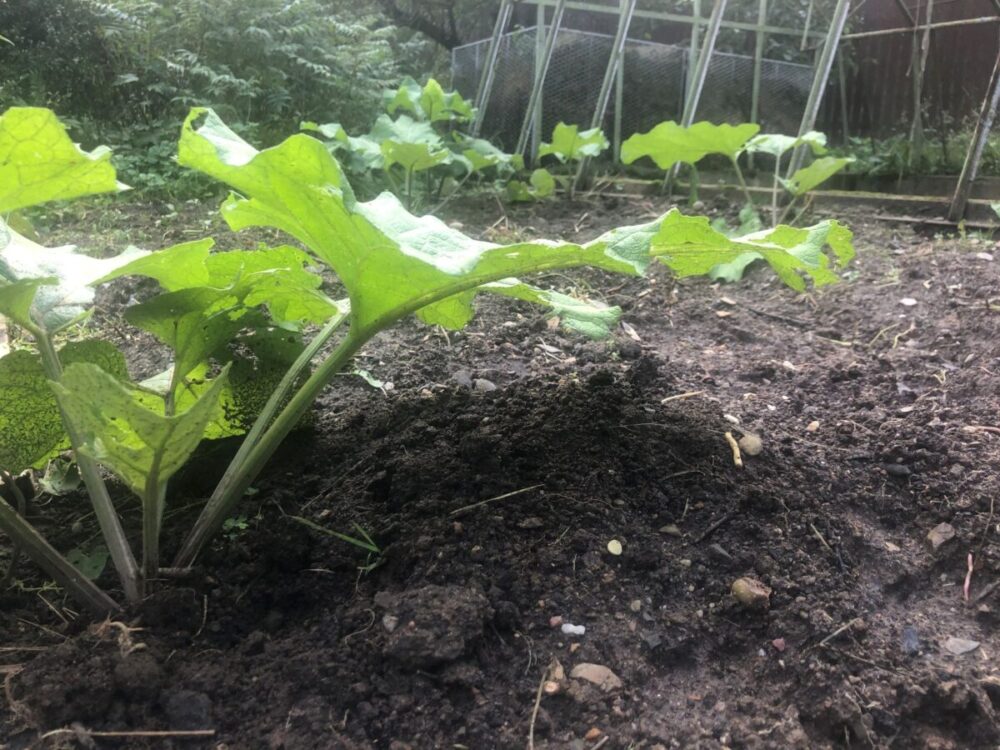NEWS FROM MIYABI - BLOG NOT ONLY ABOUT JAPANESE CUISINE
GOBO
Burdock and its medicinal root
GOBO
Dear Miyabi guests!
You probably don’t know the name gobo, which is the name of my very favourite Japanese vegetable, but you know its relative burdock, which grows by streams and behind old cottages. In the fall, burdock blooms into sticky goo and it sticks to your pants and everywhere you don’t want it to. Herbalists know about the medicinal effects of burdock (lat. Arctium lappa) and dry the burdock root, but burdock is not commonly used as a vegetable in our regions. Neither the root nor the leaves. In Japan, however, it is eaten a lot. A lot of it. In many ways. It was a completely new vegetable for me when I came to Japan forty-five years ago, and I have to say I fell in love with it immediately. It’s so beautifully earthy – koubashii – the Japanese say.
The local farmers can grow gobos into beautifully straight, almost metre-long unbranched roots, and I wonder how they manage to do it. I tried it. I brought the seeds in my suitcase and planted them last year. It grew leaves and then became a huge bush. It grew to the height of a man and eventually wrapped itself in glue. I confirmed to myself that burdock is a gobo, but that was the only benefit I achieved. Pulling the tangle of twisted roots out of the ground was not at all successful. It was all in pieces in the end, and the pieces were woody. I told myself I was done growing gobo. But gobo wasn’t finished with me. It became a weed and weeded the whole garden. For example, in the bed where I planted potatoes this year, the potatoes grew, but the burdock leaves grew there too. Only now in September.
I engraved a still young gobo and you can see the result in the picture. The roots are short and twisted, but they are white inside and smell nice, just like they should. They’ll be good for sure. I’m looking forward to making kinpira gobo, a dish we’ve been making at Miyabi for perhaps twenty-five years. Some of our regulars come to Miyabi for kinpira gobo, and I still keep that dish for them.
In the early days of Miyabi I used to bring gobo scraps dried, then I bought frozen and a few years ago I discovered a Chinese shop in Malešice in SAPA that imports fresh gobo from China. But I was probably the only customer who came to buy this gobo regularly and then they didn’t have it on the counter. Now they only have gobo on order. I went back to the frozen product so that gobo could be on the regular menu. It’s very important to me. I highly recommend this product. It is imported to the Czech Republic by JFC and TAKO Foods. You can add gobo to wholemeal soups like udon or butajir, or you can simmer it with pork. It is very good to cook gobo in dashi and add sesame tahini. Gobo can make a nice impact on the ingredients you put it together with. If you like the taste, you won’t forget it. And whoever adds the knowledge of the beneficial effects of gobo for our health will become a lifelong fan and promoter of gobo like me.
Gobo has a black skin and the inside is white. And as it happens, the skin and the skin is where most of the nutrients and vitamins are. The cooks would tell you how I howled at them when they trimmed the gobo skin with a potato peeler. It’s a good idea to just gently scrape the skin off with the reverse side of the knife blade. And you have to put the part that remains without the peel in water right away, otherwise it oxidizes and turns black. With fresh gobo, the kitchen is full of dirt, so you might prefer gobo that has been processed and frozen. Even so, gobo will remain what makes gobo a super food. Gobo is rich in fibre and that is what is lacking in our modern diet. It is said that the Mediterranean diet is healthy because people there eat a lot of high-fiber vegetables, and it is the same in Japan. Compared with other countries, these countries have a quarter fewer patients with cardiovascular disease. Now that we are worried about blood clots in connection with Covid-19, perhaps it is appropriate to think again about the raw materials that eliminate clots. Gobo is certainly one of them.
Gobo purifies the blood, lowers blood sugar and cholesterol, is anti-inflammatory, helps reduce high temperatures and is also used against rheumatism or acne. It contains calcium, potassium and amino acids. It has the advantage of being low in calories. The literature says that the plant is hardy and thrives everywhere in the world. I tried it – yes, gobo thrives in Bohemia. It thrives! So I hope that there will be a grower who will bring burdock from the meadows to the fields and grow beautiful long gobo roots for us who love gobo, so that we in Bohemia will be healthier and more resistant to the diseases that attack us.
I will be the first buyer. I hope you will join me in tasting the new gobo. I will be happy to facilitate your first encounter with gobo.
Your Miyabi Darja


